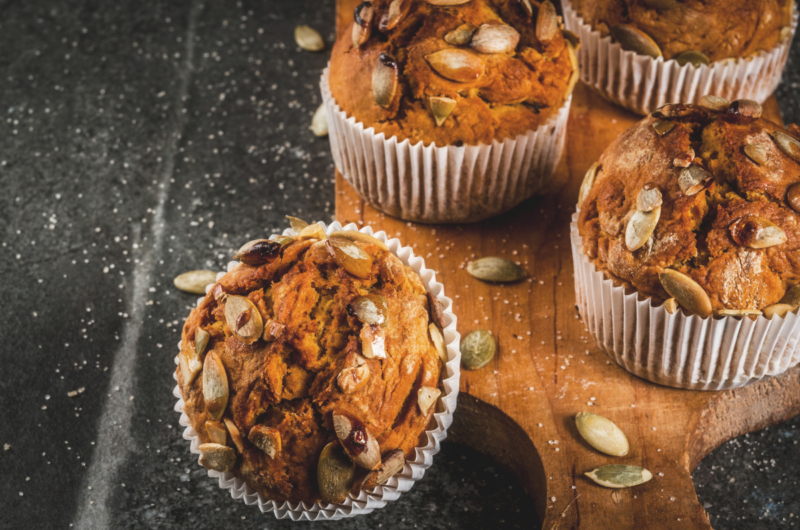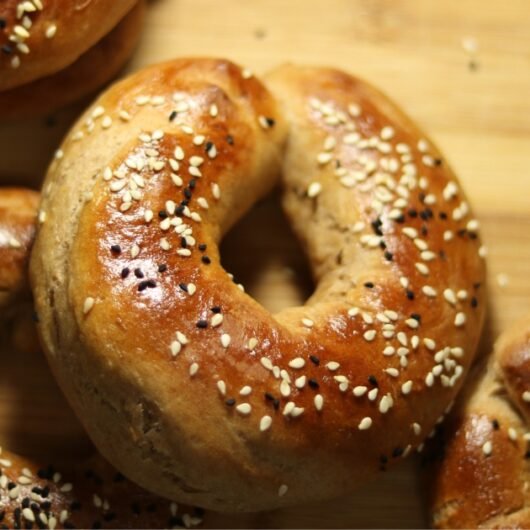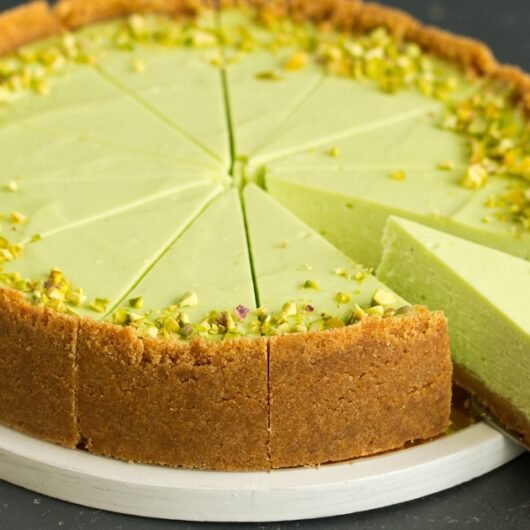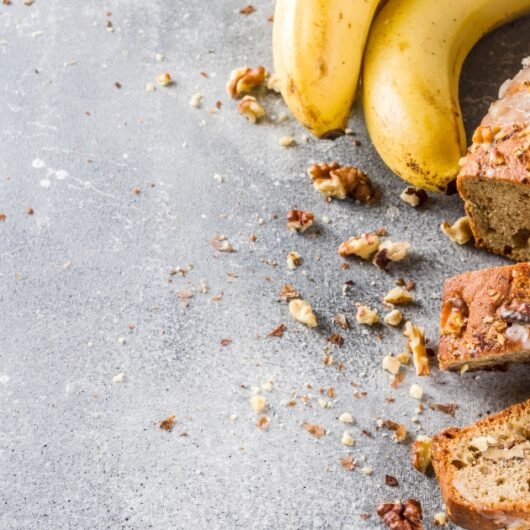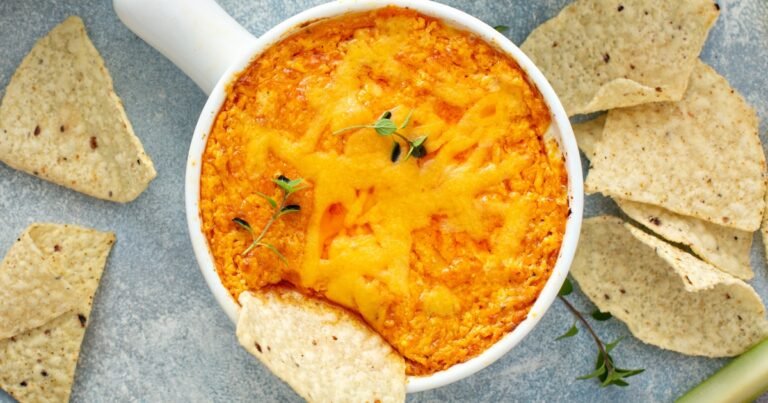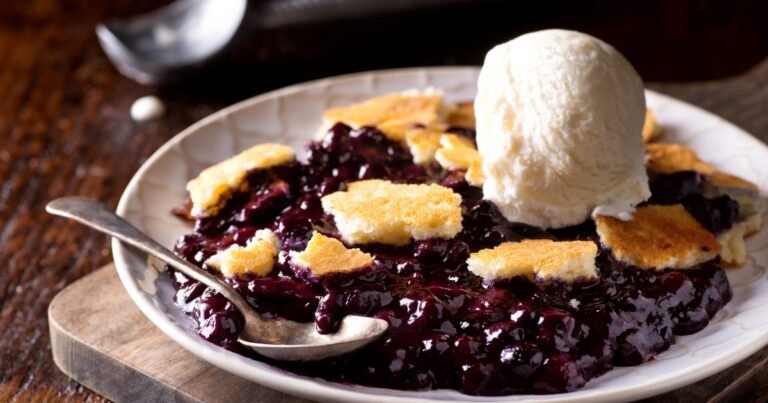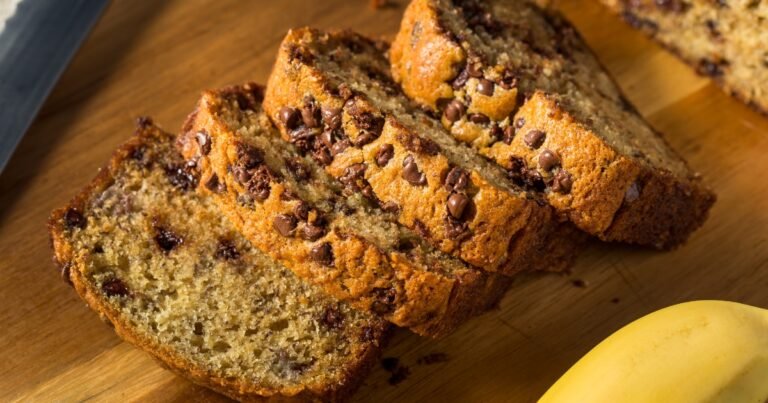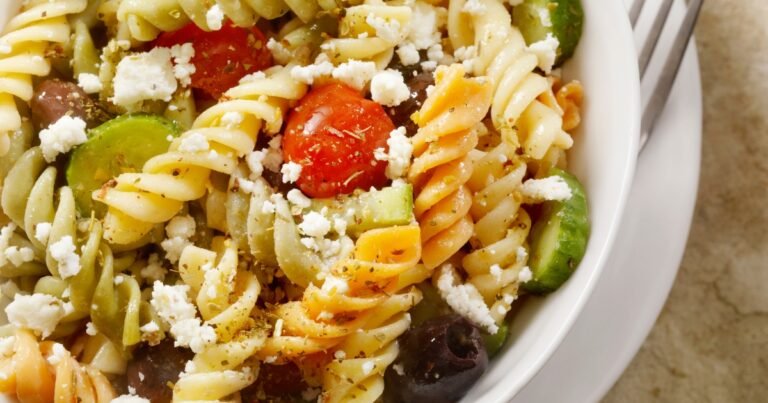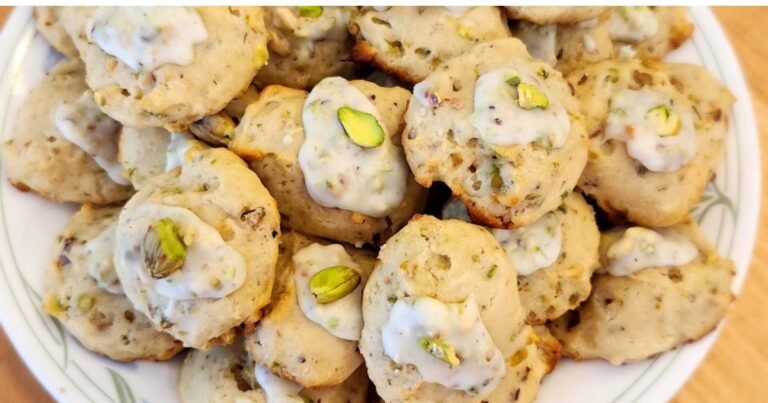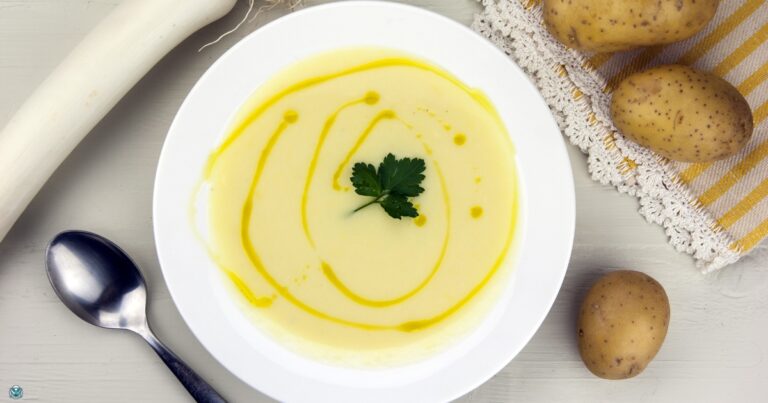Irresistibly Moist Pumpkin Muffins with a Crunchy Pepita Topping
These pumpkin muffins are the ultimate fall indulgence. Easy to bake, packed with warm spices, and topped with toasted pepitas for the perfect crunch, they’re guaranteed to become your favorite autumn treat!
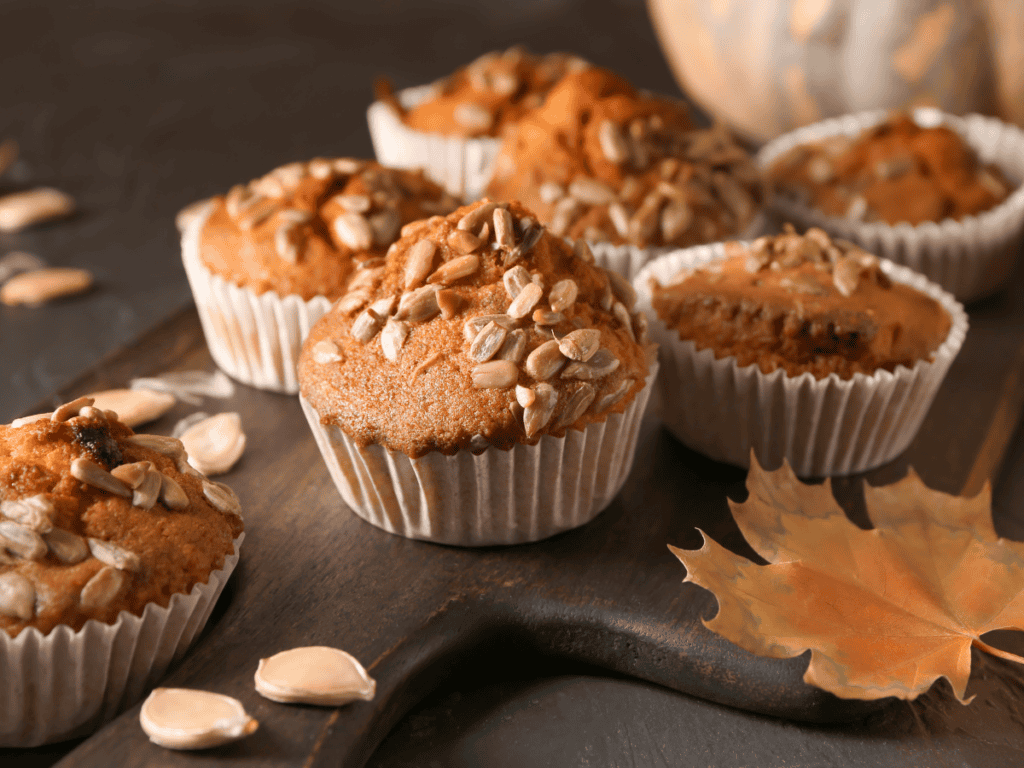
Welcome to Pumpkin Muffin Heaven!
Ah, autumn—the time when pumpkins invade everything from our lattes to our scented candles. And as a seasoned chef with three decades of kitchen adventures, I know that pumpkin muffins are practically mandatory as soon as the first leaf hits the ground.
You know the drill: sweater weather, cozy blankets, and warm muffins fresh from the oven.
But let’s not kid ourselves, not all muffin recipes are created equal. That’s why I’ve crafted these perfect pumpkin muffins with a special topping that’ll have everyone fighting over the last one. Trust me, this pumpkin muffin recipe is about to become your seasonal obsession!
Why You Need These Muffins in Your Life
Forget dry and crumbly muffins—these pumpkin muffins are insanely moist, loaded with classic fall spices, and topped with crunchy, sweet toasted pepitas. Plus, they’re incredibly easy to whip up, making them ideal for a cozy weekend bake or a quick weekday treat.
Table of Contents
Key Ingredients That Make These Pumpkin Muffins Stand Out
- Pumpkin Puree – Packed with fiber and vitamins, it keeps the muffins ultra-moist and flavorful.
- Toasted Pepitas – Add a crunchy, caramelized topping that elevates every bite; use fresh pepitas for maximum crunch and flavor.
- Greek Yogurt – A healthier alternative to heavy oils, offering moisture, richness, and protein without any processed additives.
Can I Use Canned Pumpkin Pie Filling For This Pumpkin Muffin Recipe?
Yes, you can use canned pumpkin pie filling to make this Pumpkin Muffin recipe, with a few things to keep in mind:
Adjustments: Since canned pumpkin pie filling already contains added spices and sweeteners meant for making pies, you’ll need to adjust the other ingredients in your Pumpkin Muffin recipe to accommodate the flavors and sweetness already present. You should reduce the amount of additional spices and sweeteners you add to the muffin batter.
Texture: Canned pumpkin pie filling might have a slightly different texture than plain pumpkin puree. It could be slightly thicker due to the added ingredients. You can adjust the consistency of the muffin batter by adding a little more liquid (such as milk or buttermilk) if needed.
Taste: Keep in mind that using pumpkin pie filling will impart a more pronounced pumpkin spice flavor to your muffins. This can be a delicious twist if you want a spicier and sweeter muffin.
Flexibility: While canned pumpkin pie filling can add convenience, plain canned pumpkin puree offers more flexibility and control over your muffins’ final taste and texture. With simple pumpkin puree, you can adjust the spices and sweeteners to your preference.
If you decide to use canned pumpkin pie filling for this pumpkin muffin recipe, you can taste the batter as you go and adjust as needed to balance the flavors and ensure that the muffins turn out as delicious as you envision.
Grab Everything you Need:
Gathering the necessary tools and equipment before diving into this Pumpkin Muffin Recipe is a good idea to ensure a smooth and enjoyable baking experience.
- Muffin Tin: A standard 12-cup muffin tin to bake your pumpkin muffins.
- Paper Liners: Paper muffin liners to prevent the muffins from sticking to the tin and for easy removal.
- Mixing Bowls: A set of mixing bowls for combining dry and wet ingredients.
- Whisk: A whisk for evenly incorporating ingredients and ensuring a smooth batter.
- Electric Mixer (optional): An electric mixer, either handheld or stand mixer, to cream the butter and sugar for the muffin batter.
- Measuring Cups and Spoons: Accurate measurements are crucial in baking, so have measuring cups and spoons on hand.
- Spatula: A rubber spatula for folding in the dry ingredients and scraping the sides of the bowl.
- Baking Utensils: A ladle or ice cream scoop to portion the muffin batter into the liners.
- Oven Mitts: To handle the hot muffin tin when placing it in and removing it from the oven.
- Wire Rack: A wire rack for cooling the muffins after they come out of the oven.
- Small Bowl: A small bowl for mixing the ingredients for the pumpkin seed topping.
- Baking Brush: A baking brush for coating the pumpkin seeds with melted butter.
- Toaster or Oven (for pumpkin seeds): If you’re toasting your own pumpkin seeds for the topping, you’ll need a toaster or oven for this step.
By preparing your tools and ingredients beforehand, you can focus on the cooking process without interruptions, ensuring a smooth and enjoyable Muffin-making experience.
Want to Make Fresh Pumpkin Puree?
Making homemade pumpkin puree is quite simple and can be a great way to use fresh pumpkins in your pumpkin muffin recipe when they are in season. Here’s a step-by-step guide on making homemade pumpkin puree: it depends on your preference.
- Choose the Right Pumpkin:
- Look for pie pumpkins or sugar pumpkins, which are smaller and sweeter than the larger pumpkins used for carving. These pumpkins have a smoother texture and are ideal for making puree.
- Preheat the Oven:
- Preheat your oven to 375°F (190°C).
- Prepare the Pumpkin:
- Wash the pumpkin thoroughly to remove any dirt or debris.
- Use a sharp knife to carefully cut off the stem and then cut the pumpkin in half vertically.
- Remove Seeds and Strin
- Use a spoon to scoop out the seeds and stringy fibers from the center of each pumpkin half. You can save the seeds for roasting if you like.
- Roast the Pumpkin:
- Place the pumpkin halves, cut side down, on a baking sheet lined with parchment paper or aluminum foil.
- Roast the pumpkin in the preheated oven for about 45-60 minutes, or until the flesh is fork-tender.
- Scoop the Flesh:
- Remove the roasted pumpkin from the oven and let it cool slightly.
- Once it’s cool enough to handle, use a spoon to scoop out the cooked pumpkin flesh from the skin.
- Blend or Mash:
- Transfer the pumpkin flesh to a food processor, blender, or use a potato masher.
- Blend or mash until the pumpkin is smooth and creamy. You may need to work in batches if you use a blender or food processor.
- Strain (Optional):
- If you prefer an even smoother texture, you can strain the pumpkin puree through a fine-mesh sieve to remove any remaining fibers.
- Store or Use:
- Allow the homemade pumpkin puree to cool completely before storing it in an airtight container in the refrigerator. It can also be frozen for longer storage.
- Use the homemade pumpkin puree in your favorite recipes, such as soups, pies, pancakes, muffins, and more!
*Side Note*
Homemade pumpkin puree has a fresher and more intense flavor than canned pumpkin. It’s a versatile ingredient that can elevate your fall and holiday dishes. The size of the pumpkin will determine the amount of puree you’ll get so that you can adjust the recipe quantities accordingly.
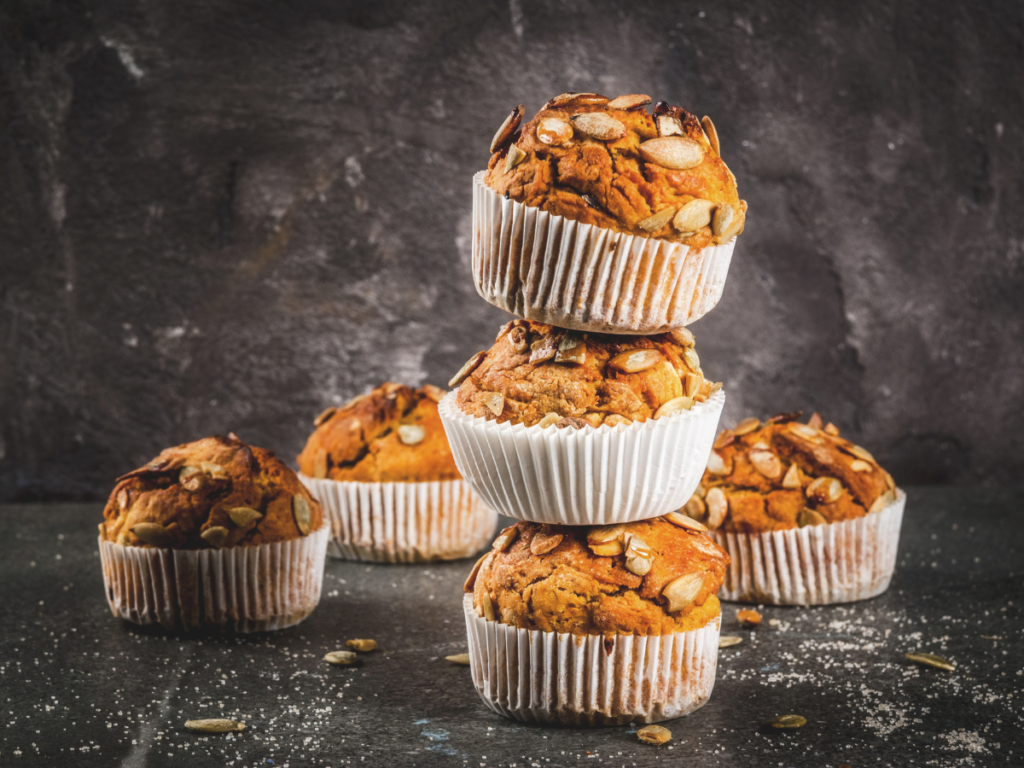
Know Your Veggies
Pumpkin is delicious and nutritious, making it an excellent ingredient for Desserts, mainly when used instead of traditional Muffin ingredients.

- Rich in Nutrients: Pumpkin is packed with essential vitamins and minerals. It’s a good source of vitamin A, necessary for maintaining healthy vision, skin, and immune function. Pumpkin also contains vitamins C and E and minerals like potassium and magnesium.
- Low in Calories and Fat: Pumpkin is naturally soft in calories and fat, making it a healthier option for those looking to manage their weight and overall health.
- High in Fiber: Pumpkin is a good source of dietary fiber, which is beneficial for digestion and helps promote feelings of fullness, making it a satisfying choice for a hearty breakfast.
- Antioxidant-Rich: The vibrant orange color of pumpkin indicates the presence of beta-carotene, a powerful antioxidant that helps protect cells from damage and supports overall health.
- Natural Sweetness: Pumpkin has a naturally sweet flavor, which can help reduce the need for excessive added sugars in recipes. This makes it a great ingredient for adding sweetness to your pancakes without relying solely on sugar.
- Versatility: Pumpkin can be used in various dishes, both sweet and savory. Its mild flavor allows it to pair well with a range of ingredients and spices, making it a versatile addition to breakfast recipes.
- Fall Flavors: Pumpkin’s warm and comforting flavor profile, often associated with fall, can add a cozy and seasonal touch to your breakfast, enhancing the overall dining experience.
- Unique Texture: When incorporated into Muffin batter, pumpkin adds moisture and a pleasing texture, resulting in muffins that are fluffy, tender, and slightly denser than traditional muffins.
*FUN FACT*
By using pumpkin as a critical ingredient in your Pumpkin Muffin Recipe, you create a delicious and satisfying meal and boost the nutritional value of your dessert.
No Buttermilk At Home? No Problem
You can quickly substitute for Buttermilk or create an alternative using common household ingredients.
Homemade Buttermilk Substitute:
For every 1 cup of buttermilk needed, add 1 tablespoon of white vinegar or lemon juice to a measuring cup.
Fill the rest of the measuring cup with milk (dairy or non-dairy) until you reach the 1-cup mark.
Stir the mixture gently and let it sit for about 5-10 minutes before using. The acid will react with the milk, creating a buttermilk-like consistency.
2. Yogurt Substitute:
You can often substitute plain yogurt for buttermilk in a 1:1 ratio. If the yogurt is thick, you can thin it with a little milk until it reaches the desired consistency.
3. Sour Cream Substitute:
Sour cream can also be used as a buttermilk substitute. Use it in a 1:1 ratio, or thin it with a little milk if it’s thick.
4. Milk and Vinegar/Lemon Juice:
You can create a buttermilk-like substitute using milk and an acid if you don’t have yogurt or sour cream.
Mix 1 cup of milk (dairy or non-dairy) with 1 tablespoon of white vinegar or lemon juice. Stir and let it sit for about 5-10 minutes before using.
Choose the substitute that works best for you based on the ingredients you have on hand and any dietary considerations. The goal is to introduce acidity into the Muffin batter, which helps create a tender and flavorful result similar to using buttermilk.
The Recipe: The Best Pumpkin Muffins With Pepitas
Easy & Delicious Substitutions
- Dairy-Free Swap: Use coconut yogurt or almond milk yogurt instead of Greek yogurt.
- Gluten-Free Swap: Substitute all-purpose flour with a gluten-free baking blend (1:1 ratio).
- Kid-Friendly Variation: Toss in mini chocolate chips or dried cranberries for extra sweetness.
- No Pepitas? No Problem!: Top with chopped pecans, walnuts, or sunflower seeds for a different crunch.
- Pantry-Friendly Option: No pumpkin puree? Mashed sweet potatoes or butternut squash puree work wonderfully too.
Serving Suggestions to Make Your Muffins Shine
Serve these muffins warm for breakfast alongside hot apple cider or a pumpkin spice latte.
They also pair beautifully with creamy butter or a drizzle of maple syrup. Perfect for brunch gatherings, school lunchboxes, or even as a comforting midnight snack.
Creative Tip: Sprinkle muffins lightly with powdered sugar or cinnamon sugar for an extra delightful touch.
Wrapping Things Up & Keeping the Love Alive
I hope you absolutely adore these pumpkin muffins as much as my family does!
Don’t forget to leave a 5-star review below, and tag @Dealiciousness when you share your muffin masterpiece—I can’t wait to see your delicious creations!
Stay connected for more tasty adventures:
💾 Love this recipe? Save it for later!
Just click the “Pin Recipe” button right on the recipe card, or use the Pinterest share button down in the bottom right corner of your screen. One quick click, and it’s ready for your board—easy, right?
Before You Go! More Recipes to Love:
High-Protein Bagels
Cooks in 70 minutesDifficulty: EasyThese high-protein bagels are soft, chewy, and packed with nutritious ingredients like Greek yogurt, almond flour, and whey protein. With a golden, slightly crisp crust and a rich, satisfying flavor, they make the perfect base for both sweet and savory toppings. Easy to make and naturally high in protein, they’ll keep you fueled all morning!
Pistachio Cream Cheesecake
Cooks in 70 minutesDifficulty: EasyThis Pistachio Cream Cheesecake is a decadent dessert featuring a buttery pistachio crust, a velvety cream cheese filling infused with rich pistachio paste, and a light, fluffy whipped topping. Every bite is bursting with nutty, creamy, and slightly sweet flavors that will leave you craving more!
Banana Nut Bread
Cooks in 70 minutesDifficulty: EasyMoist, buttery banana nut bread made with ripe bananas, toasted walnuts, warm cinnamon, and a hint of maple. This classic loaf is soft, rich in flavor, and perfect for breakfast, snacking, or dessert.
FAQs About These Pumpkin Muffins
Can I use canned pumpkin pie filling instead of pumpkin puree?
Nope—stick with pure pumpkin puree. Pie filling contains added sugar and spices, which could alter your muffin’s flavor and texture.
What if I don’t have pepitas?
No worries! Chopped walnuts, pecans, sunflower seeds, or even granola work wonderfully as alternatives.
Can I freeze these pumpkin muffins?
Absolutely! Cool completely, wrap individually in plastic wrap, then place in a zip-top freezer bag. They’ll stay fresh for up to 3 months. Thaw overnight or gently warm before enjoying.
How can I store leftovers?
Keep muffins in an airtight container at room temperature for up to 2 days or refrigerate up to 5 days for longer freshness.
What if I don’t have Greek yogurt?
Use sour cream or regular yogurt instead. The muffins will remain moist and delicious.
Happy baking and happy eating—here’s to your tastiest autumn yet!


